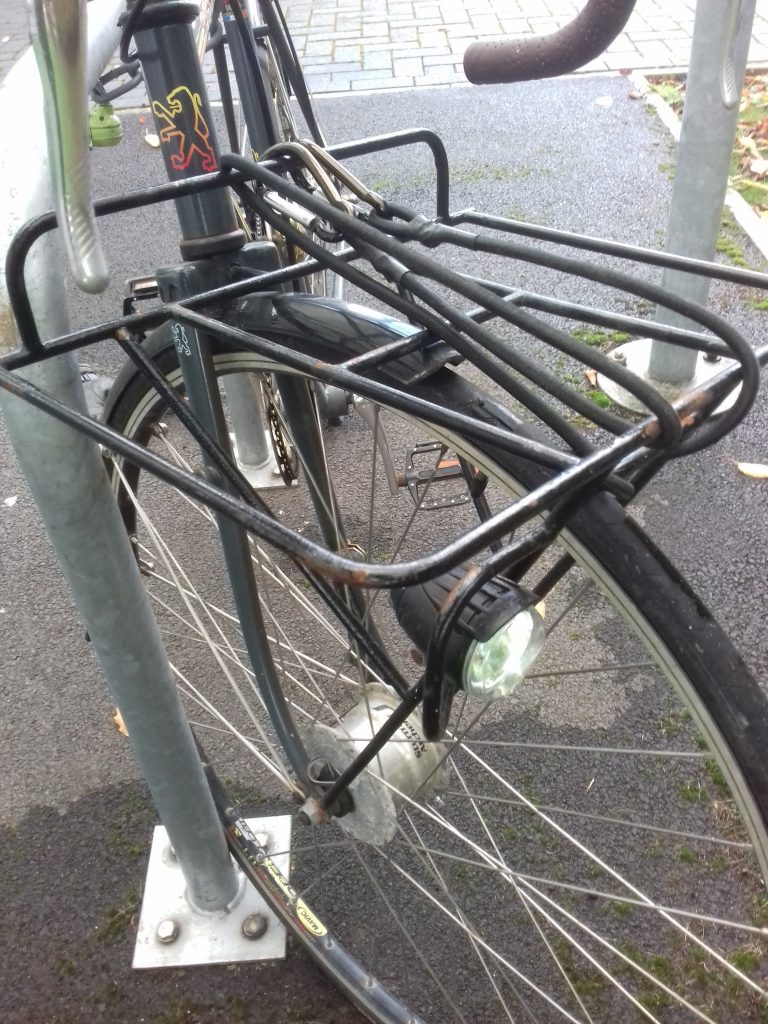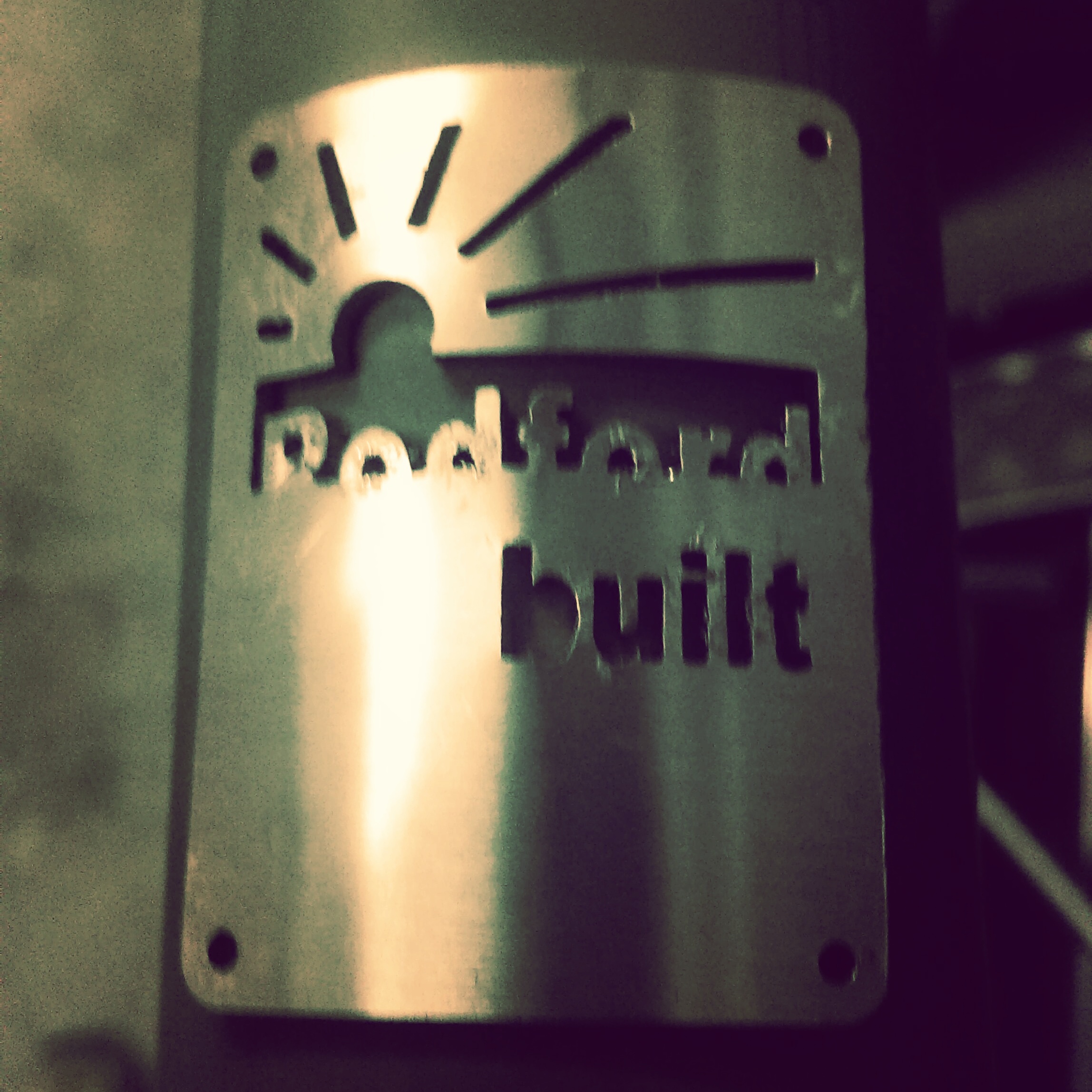Front racks come in all sorts of different designs but they can be categorised into either fork mounted or frame mounted. A front cargo rack is a great thing. It helps distribute weight more evenly between the wheels, it allows you to keep an eye on your cargo and it allows access to the cargo whilst riding (a swig from a bottle for example).Both Fork mounted and Frame mounted systems have their benefits and downsides, so here's what you should consider when selecting a front rack.Fork mount.Fork mounted racks are simple to fit usually using the front axle and fork crown hole to give three mounting points.However some bikes have special eyelets in the fork legs and some racks use the mudguard fixing on the fork ends instead.It is worth mentioning that quick release skewers should not be used to secure a front rack as it reduces wheel security; in this case mudguard fixings should be used if available or possibly p-clips on to the fork legs. Frame MountFrame mounted racks are most commonly fitted to frames which have specific mounting points around the bicycle headstock, but they can be retro fitted to some frames using a clamp system on to the down tube.Differences and considerations.The most obvious difference is that with the fork mounted system the cargo is moving with the wheel. This has the advantage that the handlebars never get in the way, meaning you can stack cargo as high as you like and the steering will still work. Of course because you are moving the cargo with the steering, loading a fork mounted rack with heavy cargo can add significant inertia to steering motion. Bikes are still rideable like this but steering is slower. Fortunately to balance a bike, steering inputs are very small so this is not too much of an issue once you have adapted to it. A further advantage is that you can add pannier bags below the rack without impacting steering lock.The frame mounted racks affect steering in a different way. Mostly the impact is less but if the bike has a lot of trail in the steering geometry then "Wheel-flop" becomes more pronounced and this gets worse the heavier the cargo is. However this is mostly only an issue when the bike is stationary. Once rolling steering is affected less than with the fork mounted rack.Also the cargo is not moving with the handlebars when using a frame rack, so care has to be taken to maintain some clearance around the handlebar sweep area.Another (not so obvious) difference can be seen when looking at how the weight is supported from the ground up.With the frame mounted rack all the weight goes through the fork. That is to say that you are adding weight to the front of the bike frame and all this weight is transmitted down via the headstock bearings to the fork crown, then to the axle via the fork legs and then through the wheel to the ground. With the fork mounted system, the fork legs themselves are spared the majority of the cargo weight because the rack strut takes the weight directly to the axle.
Frame MountFrame mounted racks are most commonly fitted to frames which have specific mounting points around the bicycle headstock, but they can be retro fitted to some frames using a clamp system on to the down tube.Differences and considerations.The most obvious difference is that with the fork mounted system the cargo is moving with the wheel. This has the advantage that the handlebars never get in the way, meaning you can stack cargo as high as you like and the steering will still work. Of course because you are moving the cargo with the steering, loading a fork mounted rack with heavy cargo can add significant inertia to steering motion. Bikes are still rideable like this but steering is slower. Fortunately to balance a bike, steering inputs are very small so this is not too much of an issue once you have adapted to it. A further advantage is that you can add pannier bags below the rack without impacting steering lock.The frame mounted racks affect steering in a different way. Mostly the impact is less but if the bike has a lot of trail in the steering geometry then "Wheel-flop" becomes more pronounced and this gets worse the heavier the cargo is. However this is mostly only an issue when the bike is stationary. Once rolling steering is affected less than with the fork mounted rack.Also the cargo is not moving with the handlebars when using a frame rack, so care has to be taken to maintain some clearance around the handlebar sweep area.Another (not so obvious) difference can be seen when looking at how the weight is supported from the ground up.With the frame mounted rack all the weight goes through the fork. That is to say that you are adding weight to the front of the bike frame and all this weight is transmitted down via the headstock bearings to the fork crown, then to the axle via the fork legs and then through the wheel to the ground. With the fork mounted system, the fork legs themselves are spared the majority of the cargo weight because the rack strut takes the weight directly to the axle. So on balance the fork mounted rack would seem to have an advantage over the frame system; partly because it avoids the handlebar clash issue and also in how it loads the fork.On the other hand, the frame rack eliminates the increased steering inertia seen with the fork rack and it would be true to say that although this affect on the steering is perfectly manageable, it is a more noticeable side effect than the wheel flop problem seen with the frame rack.So you can't have everything...............or can you?These downsides can be mitigated when a purpose-built cargo bike is fitted with a frame mounted rack.The Rodford "Big BIlly" for example has a frame mounted front cargo area, but the fork is made stronger accordingly and the trail is also reduced which in turn reduces the tendency for the wheel to flop to the side when heavy cargo is loaded. Steering response is therefore similar with the bike loaded or unloaded.
So on balance the fork mounted rack would seem to have an advantage over the frame system; partly because it avoids the handlebar clash issue and also in how it loads the fork.On the other hand, the frame rack eliminates the increased steering inertia seen with the fork rack and it would be true to say that although this affect on the steering is perfectly manageable, it is a more noticeable side effect than the wheel flop problem seen with the frame rack.So you can't have everything...............or can you?These downsides can be mitigated when a purpose-built cargo bike is fitted with a frame mounted rack.The Rodford "Big BIlly" for example has a frame mounted front cargo area, but the fork is made stronger accordingly and the trail is also reduced which in turn reduces the tendency for the wheel to flop to the side when heavy cargo is loaded. Steering response is therefore similar with the bike loaded or unloaded. This design of steering geometry is not a Rodford invention, Pashley post bikes, old butcher bikes and the more up-to-date SMX "Short John" all have frame mounted racks with reduced trail on the forks for light steering. These small errand bikes are worth a try if you get the chance.
This design of steering geometry is not a Rodford invention, Pashley post bikes, old butcher bikes and the more up-to-date SMX "Short John" all have frame mounted racks with reduced trail on the forks for light steering. These small errand bikes are worth a try if you get the chance.
We design and build bicycles in the South West of England, just outside Bristol.
Every bike is individual, each steel frame fashioned by hand, each weld unique and good function guaranteed
we are challenging the established notions of what’s possible by bike.
Nice people building good bikes.

